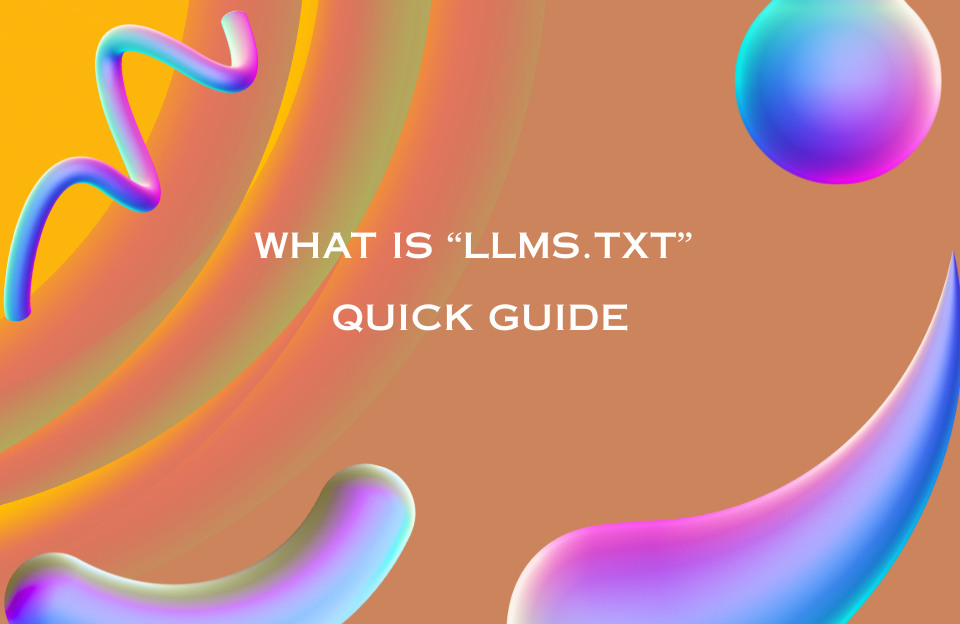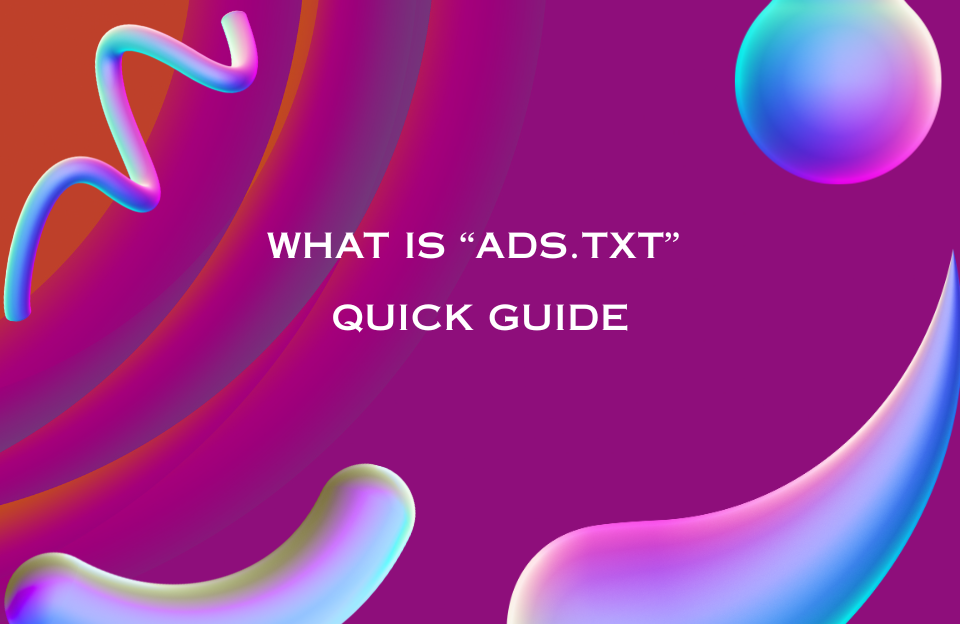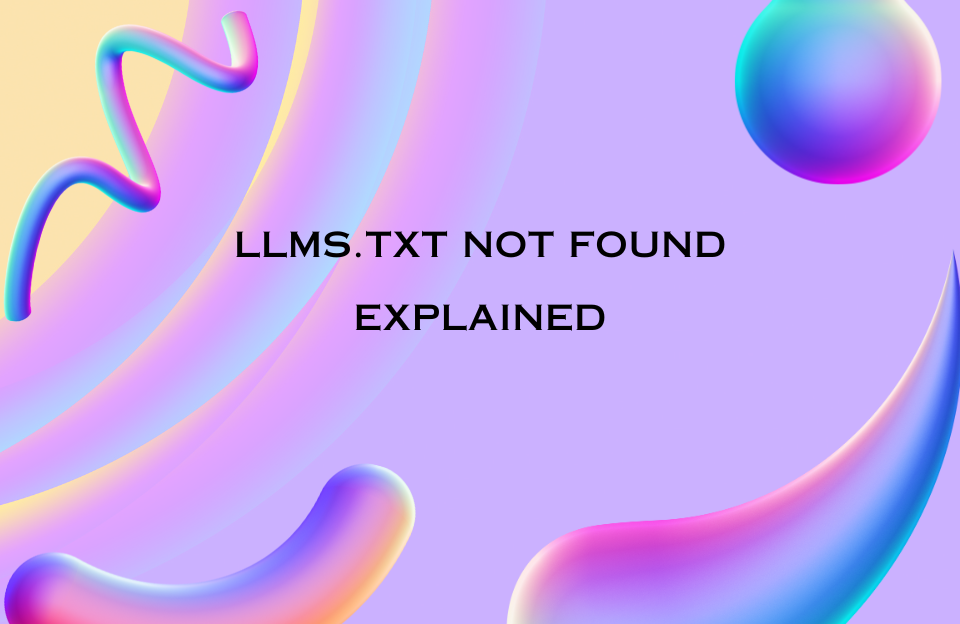llms.txt has been appearing more frequently in SEO discussions and developer logs, especially after many started seeing “llms.txt not found” notices. In our previous post, we explained why those errors occur. Now, let’s dive deeper into what llms.txt actually is, where it comes from, and how it can be used effectively.
If you’re specifically looking for solutions to the “llms.txt not found” warning, check out our dedicated troubleshooting guide: llms.txt Not Found: Causes and Fix.
1. Origin and Purpose
The llms.txt proposal was introduced by Jeremy Howard in September 2024 as a Markdown-based file format designed to help Large Language Models (LLMs) efficiently access the core content of your website. You can think of it as a lightweight table of contents for AI crawlers — listing the most relevant links and context without unnecessary HTML, JavaScript, or CMS clutter.
2. Structure and File Types
A standard llms.txt usually contains:
- An H1 heading with the project or site name.
- A blockquote summarizing the purpose of the site.
- H2 sections with key content links.
- An optional section for secondary or related links.
There’s also an extended version, llms-full.txt, which contains complete page content in Markdown. This can be useful for certain AI training or indexing scenarios but may be too heavy for quick parsing.
In some setups, separate .md files are generated for individual pages, giving LLMs direct access to clean, structured content.
Example of an llms.txt file
# Modobeam
> A digital marketing knowledge hub sharing in-depth guides, strategies, and tutorials on SEO, Google Ads, content marketing, and AI-driven marketing trends.
## Essential Pages
- https://www.modobeam.com/about/
- https://www.modobeam.com/seo-basics/
- https://www.modobeam.com/google-ads-guide/
- https://www.modobeam.com/content-marketing-strategy/
- https://www.modobeam.com/ai-in-marketing/
## Blog Highlights
- https://www.modobeam.com/llms-txt-not-found/
- https://www.modobeam.com/what-is-seo/
- https://www.modobeam.com/email-marketing-basics/
## Contact & Resources
- https://www.modobeam.com/contact/
- https://www.modobeam.com/resources/
- https://www.modobeam.com/privacy-policy/
## Optional: Related External Resources
- https://llmstxt.org/
- https://developers.google.com/search/docs/crawling-indexing/overview
3. Why It Matters
LLMs often struggle with complex website structures due to limited context windows. By clearly presenting important content in llms.txt, you:
- Help AI crawlers understand your site faster.
- Highlight only the most valuable and relevant resources.
- Reduce unnecessary crawling of low-priority pages.
Within the framework of Generative Engine Optimization (GEO), llms.txt gives site owners more control over what AI indexing algorithms prioritize. Adoption is growing, with platforms like Mintlify, Anthropic, and certain WordPress plugins now offering automatic llms.txt generation.
4. Examples & Tools
Some real-world examples and tools include:
- Documentation platforms like Mintlify and LangChain.
- AI companies such as Anthropic and Perplexity incorporating
llms.txtinto their crawling processes. - WordPress plugins that create
llms.txtfiles automatically. - Generators like Firecrawl and tools from Hostinger.
5. Pros and Cons
Pros
- Improved AI readability of your content.
- Control over which pages and links are highlighted.
- Potential performance gains compared to full HTML crawling.
Cons
- Not yet widely adopted by all AI providers.
- Risk of outdated or broken links if not maintained.
- Possible confusion with established standards like
robots.txtand sitemaps.
6. Getting Started
- Create your
llms.txtmanually in Markdown with a clear structure. - Upload it to the root of your domain (
/llms.txt). - Consider using plugins or documentation platforms to automate updates.
- Optionally create an
llms-full.txtif you want to include complete page content. - Keep it updated and test how AI tools interact with it.
Conclusion
llms.txt is a promising new standard for AI-driven web optimization. While it’s still in its early stages, it can help make your site more LLM-friendly and prepare your content for an AI-focused future. The key to success is to implement it thoughtfully and maintain it regularly.




